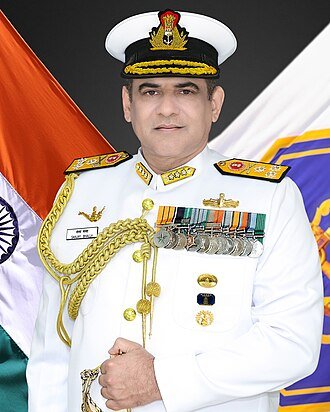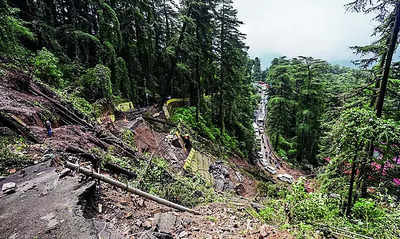
KULLU: A video clip featuring the director of IIT-Mandi blam ..








KULLU: A video clip featuring the director of IIT-Mandi blam ..


Nothing substantial has evolved during the ongoing Ukraine war for any lessons to be learnt…….yet.
It has, putting it simply, remained a war of reactions rather than action, and there are many negatives much like
those in a black demo:
• The start of the war by Russia was a black demo both in the strategic and tactical sense. Every ‘Principle of War’ was overlooked; ‘overlooked’ has been used out of politeness, a harsher word would make more sense.
• The Ukrainians have their black demos too. They fire artillery in massive barrages that emulate Soviet tactics;about 2 million rounds of 155mm since the war began, nearly exhausting Western stockpiles worldwide.
NATO has advised Ukrainians to be economical; Ukraine does not accept this as a sound military advice but an acknowledgement that the West cannot produce enough artillery ammunition. Which is true. Ukrainian
artillery fires 8,000 rounds daily, consuming an entire month of current US production.
• Bakhmut was no better than a World War I slog complete with slushy trenches and scorched countryside;
both sides shooed their soldiers into battle with a simple order of ‘do or die’, it was an operation with no ‘terminal objective’.
• The much-publicized Ukrainian counteroffensive never started when it was to start … and …. when it did, it rode on the back of a few dozen NATO tanks. And, while Ukraine assembled its hardware and trooped its
forces for the counteroffensive, Russia did nothing to spoil the concentration; not that it has done much during the war with its humungous Airforce.
• Russia has held the Ukrainian counteroffensive now for a couple of months based on a defence line which is an 800 km long fortification that stretches from the border with Belarus to the Dnieper delta. It consists of
multiple layers of trenches, bunkers, minefields, and anti-tank obstacles; how primitive!
• Ukraine has now reportedly penetrated the first line of the Russian defense in spots along the southern front and taken Robotyne, a hamlet in ruins. It has cost the Ukrainian army at least a full battalion, 500 men and
30 armoured vehicles of its dwindling forces; ‘do or die’ orders apparently stay. Simply dastardly.
The Americans are candidly discussing with Kyiv ‘lessons’ learnt from the slow progress of the counteroffensive. The
bottom-line assumption that they have arrived at is that this war will probably grind into next year.
The United States and its allies promise to remain steadfast in helping Ukraine keep pushing forward rather than look for a diplomatic solution. The Americans in their view can not be seen to abandon its ally. They believe strategic patience remains the best weapon against Putin; the Arms Manufacturers have ordered the cake.
In the process Ukraine continues to be a test bed for: –
• The sale (not aid, the west does have an ethos of free lunches) of End-of-Life equipment and it’s exploitation.
• New technologies/weapon systems (Not the most recent ones because NATO would not like to lose them to
the enemy) are being tested.
• Tactics of deployment of current technology in warfare and their exploitation – Drones , Anti Drone , Anti
Tank, AI , munitions etc. Conclusively, there are not enough lessons to re – write future strategies except perhaps in the Drones and Counter
Drones sphere.
What needs to be watched is Russia’s patience. Will he wear down the Ukrainian forces and then rapidly progress
through thinned out Ukrainian lines? Or, will he use a Tactical Nuclear Weapon if pushed to the sea
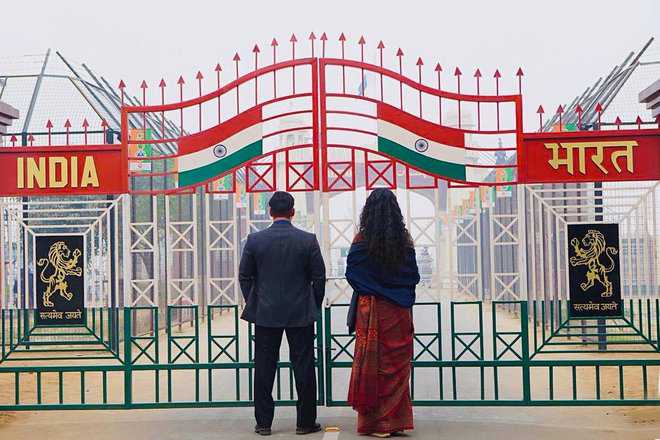
A needless controversy over the country’s names has erupted days before the G20 summit being hosted by New Delhi. Invitations for a G20 dinner described Droupadi Murmu as the ‘President of Bharat’ instead of the usual title ‘President of India’, prompting the Opposition to allege that the BJP-led Union Government had decided on ‘Bharat’ as the country’s official name and was planning to do away with ‘India’. According to a booklet titled ‘Bharat: The Mother of Democracy’, brought out for G20 delegates, ‘Bharat is the official name of the country. It is mentioned in the Constitution, as also in the discussions of 1946-48.’ BJP leaders are rooting for ‘Bharat’, while asserting that there should be no quarrel with addressing the country’s constitutional head as the ‘President of Bharat’.
Article 1 of the Constitution says: ‘India, that is Bharat, shall be a Union of States’. ‘India’ and ‘Bharat’ have coexisted for a very long time, being used interchangeably without any visible contradiction or disagreement. In a classic example, both names appear equally prominently on India’s coins of various denominations.
The government’s move is, unfortunately, seen as a knee-jerk reaction to the Opposition alliance’s ploy of naming itself INDIA. However, the Modi dispensation would be well advised not to be rattled or provoked by the tactics of a group of disparate Opposition parties presenting a united front. The ongoing war of words is a bad advertisement for a country that is all set to showcase its potential for global leadership during the G20 summit. The senseless quibbling over names does not behove the world’s fastest-growing major economy. The country, which became a republic in 1950, has been largely comfortable with its dual, bilingual identity that seamlessly blends tradition with modernity. Any attempt to impose ‘Bharat’ on Indian citizens at the expense of ‘India’ would be a regressive step, fraught with disruptive consequences. Let there be space for both, as has always been the case.
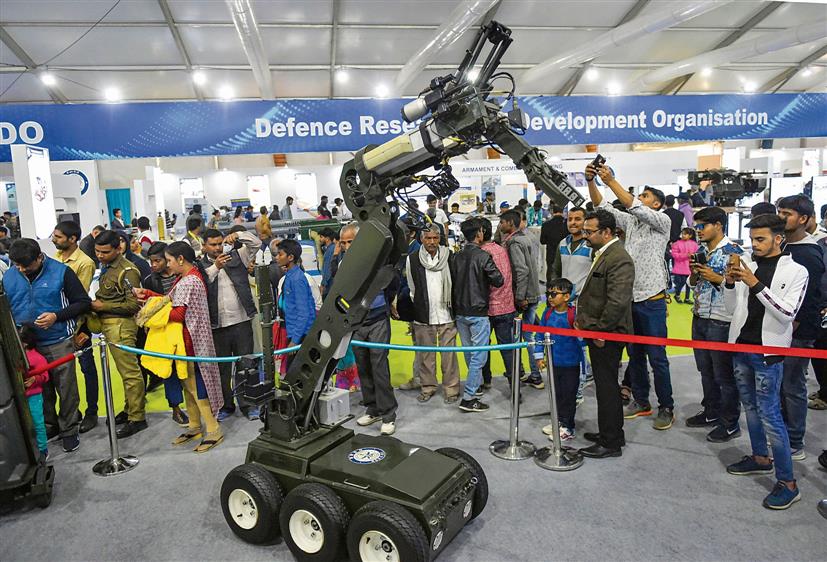
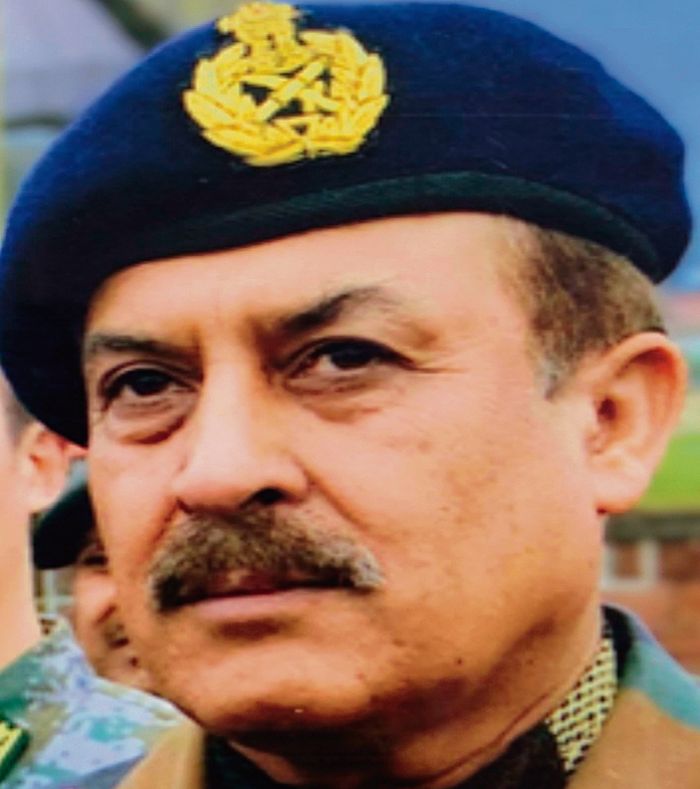
LATE last month, while the Prime Minister was profusely applauding Indian Space Research Organisation (ISRO) scientists for the success of Chandrayaan-3, a nine-member high-powered committee was set up to review the structure and role of the Defence Research and Development Organisation (DRDO). This is due to a perception that this premier defence R&D organisation is not delivering, is riddled with delays in research projects, lacks accountability and is perceived as being an ‘impediment’ (rather than a catalyst) to the capability development of the Indian armed forces. Most significantly, DRDO has not been able to rid India of the unenviable distinction of being the largest arms importer in the world.
It is often asked why DRDO fails to perform like ISRO or why it cannot deliver high-technology defence projects like the Defence Advanced Research Projects Agency (DARPA) of the US. The issues raised are fair, but they show a shallow understanding of the roles of these organisations and their functional environment. Thus, even when restructured after a review by this committee, the DRDO may still not be able to deliver unless the system of planning defence capability and atmanirbharta (indigenisation) are addressed.
ISRO came into being on August 15, 1969. Its primary objective is to harness, sustain and augment space technology for national development needs, achieved through space research and planetary exploration. Towards that end, it designs and develops launch vehicles, satellites, communication and remote-sensing programmes, navigation systems etc. In essence, ISRO progressively develops its technological base (through R&D or partnerships) and plans missions based on the threshold achieved, national needs and budgets allotted. The environment in which ISRO operates remains constant and the initiative to pace the programmes rests with it.
The DRDO was created in 1958, and at present has a network of about 50 labs researching in diverse fields. The organisation, however, operates in a nebulous environment, which is uncertain and to a large extent, externally defined. Its mission is to help India achieve self-reliance in critical defence technologies and systems, and provide support in equipping the armed forces with state-of-the-art weapon systems in accordance with the requirements laid down. The demands placed are futuristic — to keep pace with emerging and critical technologies globally — as well as current — supporting the armed forces to develop indigenous capability for their operational requirements of today. The challenge is compounded by the reality that in India, no initiative is taken to ‘define the contours of future multi-domain battlefields’ which we may be drawn into. The prerogative of shaping these contours rests with technology-pioneering global powers, one of whom is at our doorstep.
For the overall system to function, the future battlefield must be visualised, at least 10 to 15 years in advance. This should be followed by deciding the priority and weightage to be accorded to each domain, based on the defence strategy and warfighting doctrine. The services need to broadly categorise their requirements, either as ‘immediate’ (required in the next two to four years), ‘near-term’ (required in the next five to eight years) and ‘future’ (for say 10 years and beyond). The immediate requirements should largely be met from the products readily available, and near-term from the systems already designed and developed. The DRDO, the private industry/R&D organisations or innovators come into the picture for future requirements only.
The requirements, therefore, need to be identified by the services or DRDO 10-15 years beforehand. A well-established system of evolving 15-year Long-Term Integrated Perspective Plans (LTIPP) with corresponding Long-Term Technology Perspective Plans (LTTPP) of the DRDO and five-year capital acquisition plans got derailed in mid-2016 with the discontinuation of the Five-Year Plans. An alternative system of a 10-year Integrated Capability Development Plan for the services, evolved in 2020, remains a work in progress. In its absence, the functioning of DRDO and even the acquisition process remain ad hoc and emergency procurement-centric.
The challenge gets bigger due to the absence of viable strategic R&D structures outside DRDO. There are no dedicated research laboratories or scientists integral to the individual services, like the US system of Army, Air Force and Navy labs; appropriate-level research laboratories or R&D centres do not exist even in major Indian arms industries; defence and strategic orientation of the academia is at present inadequate, and funding remains modest. We are yet to evolve procedures, internally or with foreign strategic partners, to share classified technologies and information with entities outside the government.
DARPA, under the US Department of Defence, is often quoted as a model organisation that the DRDO must emulate. The former, however, works only in spheres of emerging and breakthrough technologies, in fields beyond immediate US military requirements. Also, it works only with a nucleus of about 200-plus employees and specialised programme managers, hired on short-term contracts from the academia, the government and the industry. The bulk of the work is done externally, through a network of 200 defence laboratories, R&D centres and academic institutions. For this, the organisation is funded generously. In our context, such an external environment does not exist.
The functioning of DRDO depends on a robust system of long-term planning for capability development, oriented to meet the requirements of the future battlefield. Also, a clear distinction needs to be made between acquisitions for immediate operational needs and future programmes, allowing a lead time for R&D, design and development. A robust R&D system also needs to be created outside DRDO — in private industry and academic institutions, where non-strategic programmes could be allocated. All this requires dedicated funding through a defence budget based on well-conceived guiding parameters. Without taking cognisance of these aspects, even the best recommendations from the committee may just be ‘half the job done’.
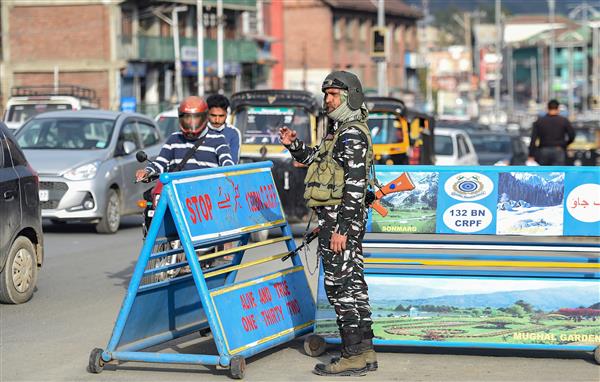
Satya Prakash
New Delhi, September 5
After 16 days of marathon arguments, a five-judge Bench led by Chief Justice DY Chandrachud on Tuesday reserved its verdict on petitions challenging the nullification of Article 370 and bifurcation of Jammu and Kashmir into two union territories – Jammu and Kashmir; and Ladakh.
The Bench – which also included Justice SK Kaul, Justice Sanjiv Khanna, Justice BR Gavai and Justice Surya Kant – would decide if the changes made on August 5 and August 6, 2019 that ended the special status of the erstwhile state of Jammu and Kashmir – were constitutionally valid or not.
At the close of arguments, the Bench said if any party to the case wanted to file a brief written submission/note, they could do it in the next three days.
On the concluding day, the Bench on Tuesday heard rejoinder arguments from senior advocates Kapil Sibal, Gopal Subramanium, Rajeev Dhavan, Zaffar Shah, Dushyant Dave, Gopal Sankaranarayan and others.
The petitioners have mainly challenged the abrogation of Article 370 on the ground that it was a political decision which lacked constitutional backing as the procedure provided for in the Constitution, particularly the requirement of recommendation of J&K Constituent Assembly, for abrogation of the provision was not followed.
As the J&K Constituent Assembly ceased to exist in 1957, Article 370 became permanent, Sibal argued.
On behalf of the Centre and some intervenors, Attorney General R Venkataramani, Solicitor General Tushar Mehta, senior advocates Harish Salve, Rakesh Dwivedi, V Giri and others defended the abrogation of Article 370 terming it a historic move that demolished the barriers in constitutional and emotional integration of Jammu and Kashmir with the rest of India.
The arguments were centered around, the Instrument of Accession (IoA), Jammu and Kashmir Constituent Assembly, Article 370, Article 367, Article 368, the Centre’s August 5, 2019 decision to abrogate Article 370, Jammu and Kashmir Reorganisation Act, which split the erstwhile state into two union territories, imposition of Governor’s rule in Jammu and Kashmir on June 20, 2018, followed by imposition of President’s rule in the erstwhile state on December 19, 2018 and its extension on July 3, 2019.
During the hearing, the Bench said once the Instrument of Accession (IoA) signed by Maharaja Hari Singh in 1948 got subsumed in a post-Constitution document indicating transfer of power, the IoA can’t act as a fetter on Parliament’s powers.
On August 31, the Centre told the Supreme Court that it’s ready for elections in Jammu and Kashmir anytime and now it’s for the Election Commission to take a call.
“The Central Government is ready for elections anytime now. Till date updating of the voters’ list was going on… which is substantially over. Some part is remaining that the Election Commission is doing,” the Solicitor General had said.
However, on restoration of statehood of Jammu and Kashmir, Mehta had said it’s progressing to become a state. He, however, refused to give a definite time frame, saying “We’re dealing with an extremely extraordinary situation.”
Emphasising that the overall situation has improved, the Centre had said that compared to 2018, terror attacks were down by 45% and Infiltration was reduced by 90% while tourism was showing signs of revival.
“In 2018, organised bandhs were 52- they are nil now… The terrorist initiated instances are reduced by 45.2%. I’m comparing the 2018 situation with the 2023 situation. Infiltration reduced by 90.2%… Law and order events… stone pelting etc. reduced by 97.2%… Security persons’ casualty is reduced by 65.9%. These are factors agencies would take into consideration,” Mehta had submitted.
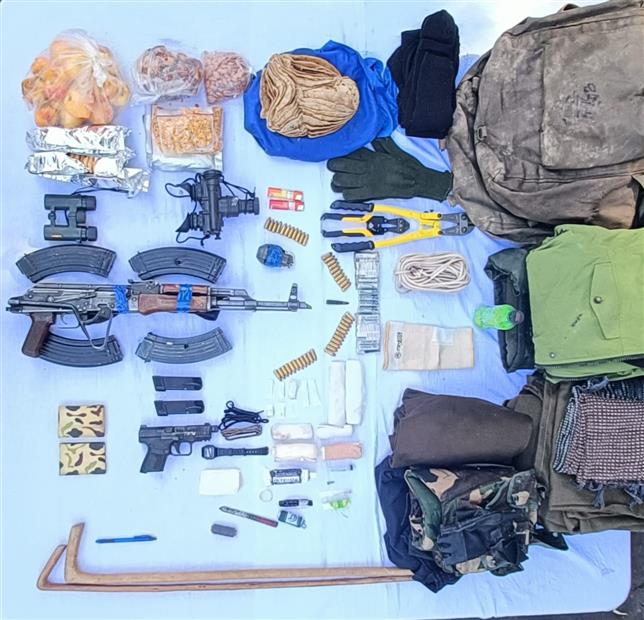
Arjun Sharma
Jammu, September 7
Army and police have recovered apples, dates, ‘chapatis’ and fence cutters along with weapons from the spot where two terrorists were shot dead during an infiltration bid on Wednesday in Poonch district.
Two terrorists were observed crossing Line of Control (LoC) on the intervening night of Tuesday and Wednesday in Mandi sub sector of Poonch district. A Joint operation was launched by Army and police immediately to intercept the terrorists.
While the ultras tried to take advantage of hostile terrain and thick vegetation in the area, soldiers laden with night vision equipment were able to eliminate the ultras. Body of one terrorist was recovered on Wednesday morning.
During a search operation which continued till Thursday, the Army recovered a cache of arms and eatables which indicate that the ultras were Pakistani and entering Indian territory for a long haul.
Sources in Army intelligence said an AK series assault rifle, a pistol along with night vision binoculars, medical kit, grenade, fence cutter, almonds, apples, dates, biscuits and batteries among others were recovered from the ultras.
“Presence of woollen gloves, clothing and walking sticks indicate that the ultras might be planning to stay in higher reaches of the UT. The presence of large quantities of eatables is an indication that they might have lived in forest areas without any local support,” said the sources.
Many terrorists have been eliminated in Rajouri, Poonch and Reasi area during the recent past even as Pakistan was trying to revive terrorism in Jammu division. Many Over Ground Workers (OGWs) have also been arrested by J&K police.

Udhampur/Jammu, September 7
A Pakistani flag attached with scores of balloons were found in Jammu and Kashmir’s Udhampur district, police said on Thursday.
It was found hanging from a tree in Sunetar village of Ramnagar tehsil earlier in the day, they said.
The flag was attached with posters and scores of red and green balloons.
Senior Superintendent of Police of Udhampur Vinood Kumar told PTI that it might have flown to this side with balloons.

Ajay Banerjee
New Delhi, September 6
Aiming to match the Chinese infrastructure across the Line of Actual Control (LAC), Defence Minister Rajnath Singh is scheduled to lay the foundation stone for an Indian Air Force base in eastern Ladakh’s Nyoma on September 12.
The Border Roads Organisation (BRO), under the Ministry of Defence, would build the project at an estimated cost of Rs 214 crore within two years. Nyoma, located at an altitude of 13,700 feet on the banks of the Indus, is some 180 southeast of Leh. It is a naturally flat area and is being used by helicopters and special operation planes such as C-130J that can land on mud-paved runway. The aim is to have a fighter jet base that can launch and recover planes, and also carry out minor maintenance jobs.
The site is spread over 1,235 acres where a 2.7-km runway with allied military infrastructure will come up. Rajnath will, the same day, formally inaugurate the Nechiphu Tunnel on the strategically vital 329-km Tezpur-Tenga-Bomdila-Tawang route that leads to the LAC in West Kameng district of Arunachal Pradesh. Nechiphu Tunnel is at an altitude of 5,700 feet and is conceived to bypass extreme foggy conditions prevailing around Nechiphu Pass, which had been hindering the smooth flow of general traffic and military convoys for decades. The tunnel is part of a plan to rapidly deploy troops and weapons along the LAC. Apart from the Nechiphu Tunnel, two more tunnels under Sela—a 13,700-ft-high Himalayan massif—are being constructed on the same 329-km route to the LAC.
The Nyoma airbase and the Arunachal tunnel are part of the BRO’s 90 infrastructure projects that Rajnath would dedicate to the nation on September 12. The ceremony would be carried out at Devak Bridge in Jammu where the minister would inaugurate a 422-metre bridge on the Bishnah-Kolpur-Phulpur road in Jammu and Kashmir, said an official.
Rajnath will also inaugurate the reconstructed and revamped airfield at Bagdogra and Barrackpore in West Bengal. Bagdogra, in north Bengal, is the closest base to Doklam plateau on the India-Bhutan-China tri-junction. China is disputing the boundary alignment and India and China have had a military stand-off in 2017. These airfields have been reconstructed at a cost of Rs 529 crore. The minister will also inaugurate 22 roads and 63 bridges. Of these, 11 are in J&K, 26 in Ladakh, 36 in Arunachal, five in Mizoram, three in Himachal Pradesh, two each in Sikkim, Uttarakhand and West Bengal and one each in Nagaland, Rajasthan and Andaman & Nicobar Islands.

WITH a thaw in the India-China relations remaining elusive, New Delhi has stepped up efforts to strengthen border infrastructure in a bid to keep pace with the relentless build-up by Beijing. Defence Minister Rajnath Singh will inaugurate 90 projects, built by the Border Roads Organisation (BRO) along the Line of Actual Control (LAC) at a cost of Rs 2,941 crore, on September 12. These include roads, bridges, tunnels and airfields in 10 border states and union territories. Last year, 103 BRO infrastructure projects were dedicated to the nation at a cost of Rs 2,897 crore.
The minister will also lay the foundation stone for an airfield, which will be constructed by the BRO at an estimated cost of Rs 218 crore in the strategically important Nyoma area of eastern Ladakh. The airfield is expected to augment air infrastructure in Ladakh — a hotbed of India-China hostilities — and boost the Indian Air Force’s battle-readiness along the northern border. It is critical to ensure that such important projects are completed within their timelines. Any delay can be detrimental to the interests of national security. Worrisome is the fact that the strategic Sela tunnel in Arunachal Pradesh, which will facilitate faster deployment of troops and weapons to forward areas in the Tawang sector, has already missed a series of deadlines.
The BRO chief, Lt Gen Rajeev Chaudhry, has admitted that India is behind China in raising border infrastructure, but he added that the country is catching up fast by dint of speedy execution of strategic projects to bolster military operations. In his estimation, India will almost draw level with China in the next three to four years. However, it would be naïve to presume that Beijing would take its foot off the pedal in the coming years. Even as military and diplomatic parleys between the two sides are likely to continue, India must go all out to scale up its presence along the LAC.
























